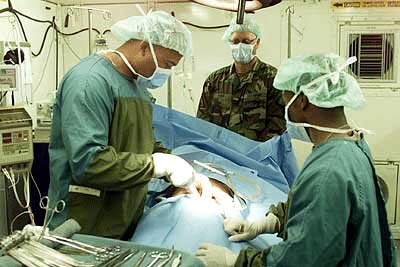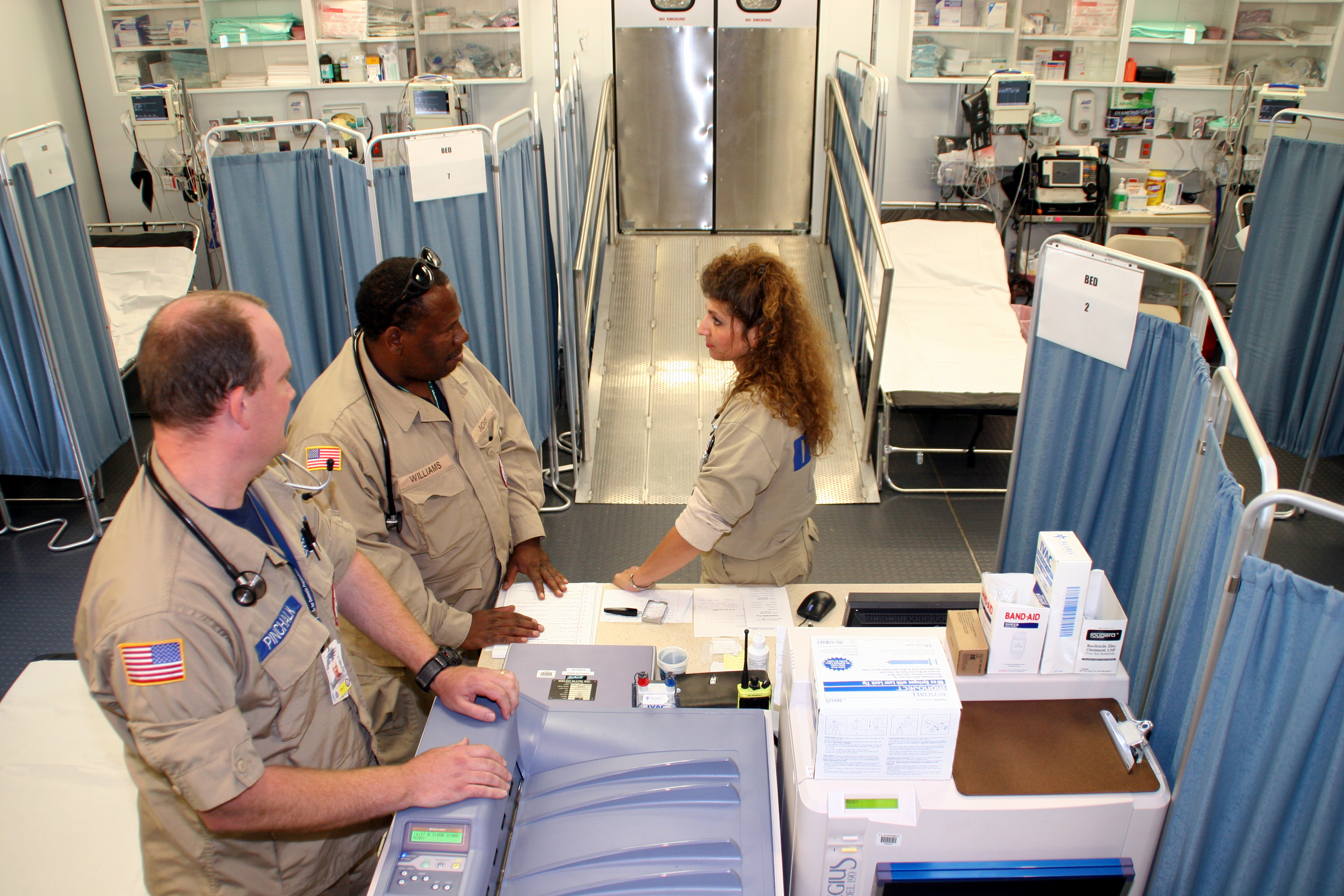|
Good Samaritan Regional Medical Center (Oregon)
Good Samaritan Regional Medical Center is a 188-bed teaching hospital located in Corvallis, Oregon, United States. Founded in 1922, it is the only hospital in the city. The hospital operates a level II trauma center, and serves the Linn, Benton, and Lincoln County area. The hospital operates a number of residency training and fellowship programs for newly graduated physicians, psychologists, and pharmacists. The hospital serves as the hub for the operations of Samaritan Health Services. It is accredited by the Joint Commission on Accreditation of Healthcare Organizations. History Started as Corvallis General Hospital, the original facility was located on Northwest Harrison Boulevard. After World War II the hospital was on the brink of bankruptcy, unable to pay off its bonds. In an effort to retire the debt the hospital was put under the auspices of the Episcopal Diocese of Oregon. In 1948, Corvallis General was reconstituted as a nonprofit organization and renamed Good Sam ... [...More Info...] [...Related Items...] OR: [Wikipedia] [Google] [Baidu] |
Samaritan Health Services
The Samaritan Health Services (SHS) is a non-profit, integrated delivery healthcare system consisting of five hospitals in Oregon and is headquartered in Corvallis, Oregon. Operations SHS operates five hospitals and has over five hundred employed providers in Oregon. The largest hospitals are two Acute Care Hospitals in Corvallis and Albany, and three Critical Access Hospitals(CAHs) in Lebanon, Newport, and Lincoln City. Hospitals SHS oversees the operations of five Oregon hospitals: * Good Samaritan Regional Medical Center is a 188-bed medical facility in Corvallis, Oregon. The only hospital in the city, it is a level II trauma center, and serves the Linn, Benton, and Lincoln County area. *Samaritan Albany General Hospital is a 76-bed medical facility in Albany, Oregon. Services include a level III trauma center, as well as the first open magnetic resonance imaging facility in the middle Willamette Valley. *Samaritan Lebanon Community Hospital is a 25-bed critical acces ... [...More Info...] [...Related Items...] OR: [Wikipedia] [Google] [Baidu] |
Bankruptcy
Bankruptcy is a legal process through which people or other entities who cannot repay debts to creditors may seek relief from some or all of their debts. In most jurisdictions, bankruptcy is imposed by a court order, often initiated by the debtor. Bankrupt is not the only legal status that an insolvent person may have, and the term ''bankruptcy'' is therefore not a synonym for insolvency. Etymology The word ''bankruptcy'' is derived from Italian ''banca rotta'', literally meaning "broken bank". The term is often described as having originated in renaissance Italy, where there allegedly existed the tradition of smashing a banker's bench if he defaulted on payment so that the public could see that the banker, the owner of the bench, was no longer in a condition to continue his business, although some dismiss this as a false etymology. History In Ancient Greece, bankruptcy did not exist. If a man owed and he could not pay, he and his wife, children or servants were forced into " ... [...More Info...] [...Related Items...] OR: [Wikipedia] [Google] [Baidu] |
Orthopedic Surgery
Orthopedic surgery or orthopedics ( alternatively spelt orthopaedics), is the branch of surgery concerned with conditions involving the musculoskeletal system. Orthopedic surgeons use both surgical and nonsurgical means to treat musculoskeletal trauma, spine diseases, sports injuries, degenerative diseases, infections, tumors, and congenital disorders. Etymology Nicholas Andry coined the word in French as ', derived from the Ancient Greek words ὀρθός ''orthos'' ("correct", "straight") and παιδίον ''paidion'' ("child"), and published ''Orthopedie'' (translated as ''Orthopædia: Or the Art of Correcting and Preventing Deformities in Children'') in 1741. The word was assimilated into English as ''orthopædics''; the ligature ''æ'' was common in that era for ''ae'' in Greek- and Latin-based words. As the name implies, the discipline was initially developed with attention to children, but the correction of spinal and bone deformities in all stages of life eventually ... [...More Info...] [...Related Items...] OR: [Wikipedia] [Google] [Baidu] |
General Surgery
General surgery is a surgical specialty that focuses on alimentary canal and abdominal contents including the esophagus, stomach, small intestine, large intestine, liver, pancreas, gallbladder, appendix and bile ducts, and often the thyroid gland. They also deal with diseases involving the skin, breast, soft tissue, trauma, peripheral artery disease and hernias and perform endoscopic procedures such as gastroscopy and colonoscopy. Scope General surgeons may sub-specialize into one or more of the following disciplines: Trauma surgery In many parts of the world including North America, Australia and the United Kingdom, the overall responsibility for trauma care falls under the auspices of general surgery. Some general surgeons obtain advanced training in this field (most commonly surgical critical care) and specialty certification surgical critical care. General surgeons must be able to deal initially with almost any surgical emergency. Often, they are the first port of c ... [...More Info...] [...Related Items...] OR: [Wikipedia] [Google] [Baidu] |
Child And Adolescent Psychiatry
Child and adolescent psychiatry (or pediatric psychiatry) is a branch of psychiatry that focuses on the diagnosis, treatment, and prevention of mental disorders in children, adolescents, and their families. It investigates the biopsychosocial factors that influence the development and course of psychiatric disorders and treatment responses to various interventions. Child and adolescent psychiatrists primarily use psychotherapy and/or medication to treat mental disorders in the pediatric population. History When psychiatrists and pediatricians first began to recognize and discuss childhood psychiatric disorders in the 19th century, they were largely influenced by literary works of the Victorian era. Authors like the Brontë sisters, George Eliot, and Charles Dickens, introduced new ways of thinking about the child mind and the potential influence early childhood experiences could have on child development and the subsequent adult mind. When the ''Journal of Psychological Medicine ... [...More Info...] [...Related Items...] OR: [Wikipedia] [Google] [Baidu] |
Psychiatry
Psychiatry is the medical specialty devoted to the diagnosis, prevention, and treatment of mental disorders. These include various maladaptations related to mood, behaviour, cognition, and perceptions. See glossary of psychiatry. Initial psychiatric assessment of a person typically begins with a case history and mental status examination. Physical examinations and psychological tests may be conducted. On occasion, neuroimaging or other neurophysiological techniques are used. Mental disorders are often diagnosed in accordance with clinical concepts listed in diagnostic manuals such as the ''International Classification of Diseases'' (ICD), edited and used by the World Health Organization (WHO) and the widely used '' Diagnostic and Statistical Manual of Mental Disorders'' (DSM), published by the American Psychiatric Association (APA). The fifth edition of the DSM (DSM-5) was published in May 2013 which re-organized the larger categories of various diseases and expanded upon the p ... [...More Info...] [...Related Items...] OR: [Wikipedia] [Google] [Baidu] |
Family Medicine
Family medicine is a medical specialty within primary care that provides continuing and comprehensive health care for the individual and family across all ages, genders, diseases, and parts of the body. The specialist, who is usually a primary care physician, is named a family physician. It is often referred to as general practice and a practitioner as a general practitioner. Historically, their role was once performed by any doctor with qualifications from a medical school and who works in the community. However, since the 1950s, family medicine / general practice has become a specialty in its own right, with specific training requirements tailored to each country. The names of the specialty emphasize its holistic nature and/or its roots in the family. It is based on knowledge of the patient in the context of the family and the community, focusing on disease prevention and health promotion. According to the World Organization of Family Doctors (WONCA), the aim of family medi ... [...More Info...] [...Related Items...] OR: [Wikipedia] [Google] [Baidu] |
Dermatology
Dermatology is the branch of medicine dealing with the skin.''Random House Webster's Unabridged Dictionary.'' Random House, Inc. 2001. Page 537. . It is a speciality with both medical and surgical aspects. A dermatologist is a specialist medical doctor who manages diseases related to skin, hair, nails, and some cosmetic problems. Etymology Attested in English in 1819, the word "dermatology" derives from the Greek δέρματος (''dermatos''), genitive of δέρμα (''derma''), "skin" (itself from δέρω ''dero'', "to flay") and -λογία '' -logia''. Neo-Latin ''dermatologia'' was coined in 1630, an anatomical term with various French and German uses attested from the 1730s. History In 1708, the first great school of dermatology became a reality at the famous Hôpital Saint-Louis in Paris, and the first textbooks (Willan's, 1798–1808) and atlases ( Alibert's, 1806–1816) appeared in print around the same time.Freedberg, et al. (2003). ''Fitzpatrick's Dermatology in ... [...More Info...] [...Related Items...] OR: [Wikipedia] [Google] [Baidu] |
Emergency Department
An emergency department (ED), also known as an accident and emergency department (A&E), emergency room (ER), emergency ward (EW) or casualty department, is a medical treatment facility specializing in emergency medicine, the acute care of patients who present without prior appointment; either by their own means or by that of an ambulance. The emergency department is usually found in a hospital or other primary care center. Due to the unplanned nature of patient attendance, the department must provide initial treatment for a broad spectrum of illnesses and injuries, some of which may be life-threatening and require immediate attention. In some countries, emergency departments have become important entry points for those without other means of access to medical care. The emergency departments of most hospitals operate 24 hours a day, although staffing levels may be varied in an attempt to reflect patient volume. History Accident services were provided by workmen's compensation ... [...More Info...] [...Related Items...] OR: [Wikipedia] [Google] [Baidu] |
COVID-19 Pandemic
The COVID-19 pandemic, also known as the coronavirus pandemic, is an ongoing global pandemic of coronavirus disease 2019 (COVID-19) caused by severe acute respiratory syndrome coronavirus 2 (SARS-CoV-2). The novel virus was first identified in an outbreak in the Chinese city of Wuhan in December 2019. Attempts to contain it there failed, allowing the virus to spread to other areas of Asia and later worldwide. The World Health Organization (WHO) declared the outbreak a public health emergency of international concern on 30 January 2020, and a pandemic on 11 March 2020. As of , the pandemic had caused more than cases and confirmed deaths, making it one of the deadliest in history. COVID-19 symptoms range from undetectable to deadly, but most commonly include fever, dry cough, and fatigue. Severe illness is more likely in elderly patients and those with certain underlying medical conditions. COVID-19 transmits when people breathe in air contaminated by droplets and ... [...More Info...] [...Related Items...] OR: [Wikipedia] [Google] [Baidu] |
Coronavirus Disease 2019
Coronavirus disease 2019 (COVID-19) is a contagious disease caused by a virus, the severe acute respiratory syndrome coronavirus 2 (SARS-CoV-2). The first known case was identified in Wuhan, China, in December 2019. The disease quickly spread worldwide, resulting in the COVID-19 pandemic. The symptoms of COVID‑19 are variable but often include fever, cough, headache, fatigue, breathing difficulties, loss of smell, and loss of taste. Symptoms may begin one to fourteen days after exposure to the virus. At least a third of people who are infected do not develop noticeable symptoms. Of those who develop symptoms noticeable enough to be classified as patients, most (81%) develop mild to moderate symptoms (up to mild pneumonia), while 14% develop severe symptoms (dyspnea, hypoxia, or more than 50% lung involvement on imaging), and 5% develop critical symptoms (respiratory failure, shock, or multiorgan dysfunction). Older people are at a higher risk of developing seve ... [...More Info...] [...Related Items...] OR: [Wikipedia] [Google] [Baidu] |
.png)





